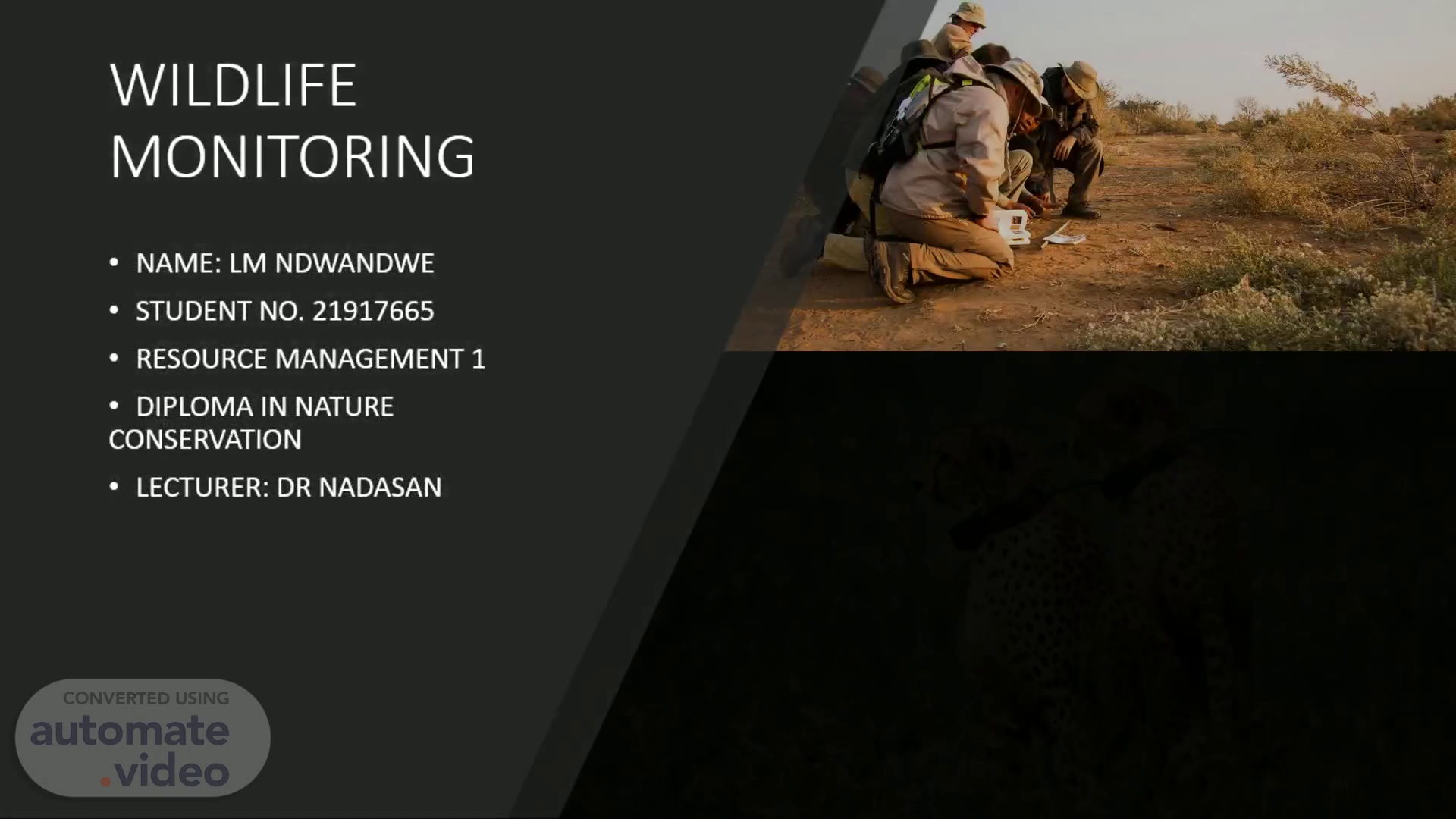Scene 1 (0s)
WILDLIFE MONITORING. A group of people in military uniforms Description automatically generated with low confidence.
Scene 2 (12s)
Significance of monitoring wildlife. A nursing buffalo calf.
Scene 3 (30s)
Techniques used in wildlife monitoring. A bird house on a tree Description automatically generated with low confidence.
Scene 4 (48s)
CAMERA TRAP MONITORING. Gray rhino. Video camera.
Scene 5 (1m 17s)
Tracking collars. The collars provide movement data , they assist in the security of the endangered animals, under risk of poaching like rhinos They report live in control rooms They are fitted in necks in wild dogs and other animals but they are fitted on ankles on rhinos Anti- poaching transmitter technology Sends real-time information to monitors about animal movement and location When inserted in a rhino horn it detects distress and when the horn is being hacked off They are drilled into the rhino horn.
Scene 6 (1m 46s)
Monitoring techniques.
Scene 7 (3m 56s)
Drones they can cover large areas they provide GPS information and visual information.
Scene 8 (4m 4s)
ADVANTAGES OF WILDLIFE MONITORING. It gives us the ability to simultaneously evaluate various indicator It does not only provide data collection but real-time data transmissions e.g. the camera traps The collars do not only collect data but they also save the lives of the animals when they are caught in snares their necks are protected from snares Photography can be taken for later analysis Some techniques can be used in areas where aircraft cannot reach.
Scene 9 (4m 25s)
Disadvantages of wildlife monitoring. The techniques may cause a disturbance to species if they are too cautious of danger The cameras can be damaged or stolen Battery in collars lasts for about a year, for longer research the researcher would have to re-capture the animals to change the batteries in their collars.
Scene 10 (4m 41s)
Challenges in wildlife monitoring. Remote monitoring is difficult to implement in remote wild areas, areas without stable internet connection and good maintenance of equipment. Satellite and other tracking technologies can be expensive and not 100% reliable Monitoring system need to be comfortable for the animal to maintain natural behaviour, the collars on the neck of the animals could impede a normal feeding behaviour, they may also cause injury if the animal falls Other challenges include climate, weather conditions may not be favourable for the technique equipment to function properly.
